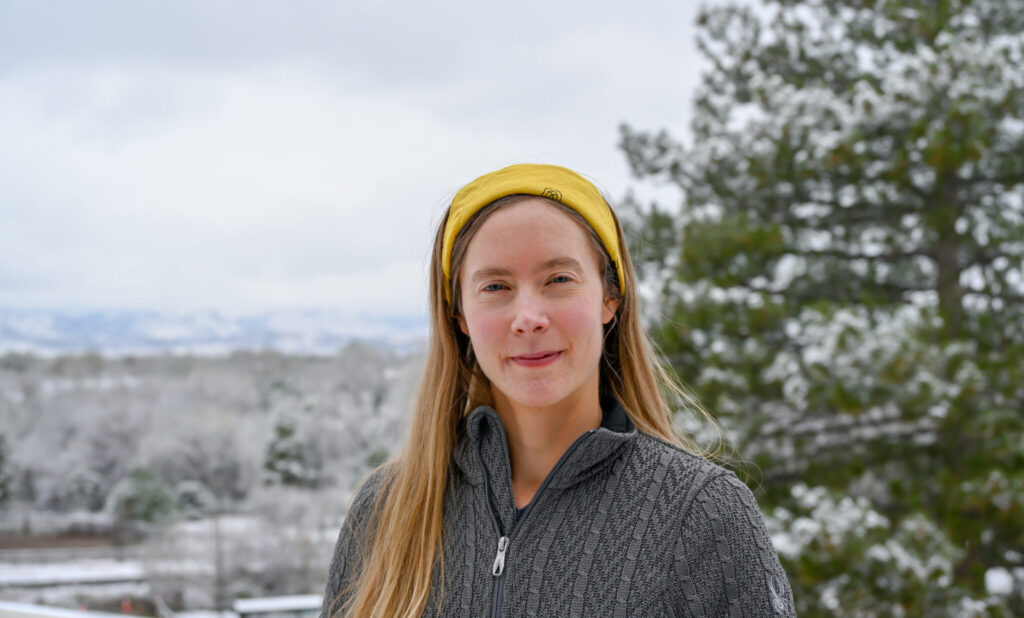
The Colorado Department of Public Health and Environment has awarded $3.25 million to Colorado State University researchers to improve and protect Colorado’s air quality related to methane emissions from oil and gas production.
This project will support the implementation of the Intensity Verification Rule enacted by the Colorado Air Quality Control Commission in July 2023. The regulation outlines oil and gas facility procedures for calculating greenhouse gas intensity, monitoring operations to ensure adherence to standards, and maintenance of accurate emissions records. Colorado was the first place to adopt such a rule.
Anna Hodshire, research scientist at the Colorado State University Energy Institute, will lead the research as part of the Methane Emissions Technologies Evaluation Center. An initiative between CSU, University of Texas at Austin and the Colorado School of Mines called the Energy Emissions Modeling and Data Laboratory will support the project.
Challenges
Researchers will collect site-level aircraft measurements performed at a subset of facilities to inventory methane emissions from the oil and gas sector throughout Colorado. Methane is a strong greenhouse gas and can leak from oil and gas operations, such as pipes or wells. Leaks can vary widely in size and duration.
“If we have a really accurate picture right now then in two, five, 10 years, we can say, look at all of the emissions that are dropping,” said Hodshire. Anticipated decreases in methane emissions are expected from oil and gas facilities due to improvements in equipment, leak detection, and regulations. However, if current estimates are inaccurate, it will be challenging to determine progress over time, she said.
Using data collected by aircraft, the team plans to estimate emissions coming from Colorado’s major basins, where oil and gas operations are happening. To make accurate estimates, the team needs to be able to distinguish between types of emissions, such as long-term leaks versus short-term events. When operators are fixing facilities, like updating pipes, emissions can increase for a short maintenance period. Some challenges arise because aircraft sampling typically happens during working hours when maintenance tends to occur. Aircraft sampling tends to be too infrequent to identify the duration of maintenance emissions.
“Those maintenance activities on average are lasting for less than an hour. So, no matter how much this gas is going out, it’s only going out for an hour or less on average,” said Hodshire, who obtained her doctorate in Atmospheric Science from CSU’s Walter Scott, Jr. College of Engineering. “Whereas, if it’s a leak, it could be going on for days, weeks, months depending on how long it takes to catch.”
Working Together
The research team plans to establish a system to allow participating oil and gas operators to review aircraft detections. This will help operators to determine where maintenance may need to occur, while establishing a dialogue with researchers and providing opportunities for education.
“As operators continue to improve operations, upgrade equipment, find and repair leaks over time, their emissions should continue to drop,” said Hodshire. “You can be an operator and you can work with academics, and this can be to your benefit.”
Operators can opt in to participate and be covered by a nondisclosure agreement. Researchers will publish aggregated data so they can uphold anonymity of individual operators.
The CSU team and operators will have regular working group meetings. Operators will have a chance to share what they believe is responsible for leaks detected by the aircraft – such as a known long-term problem or short-term maintenance in action. This will help the research team update their emissions models.
“If you are thinking about how much gas is being released from a basin for like a year, and if you have 100 maintenance activities and 100 leaks, you should not equate the maintenance activities to the leaks,” said Hodshire. “Maintenance activities are not 24/7, so do not scale them like they are 24/7.”
The project started in March 2024 and will run through June 2025. This work complements other studies being conducted by Methane Emissions Technologies Evaluation Center Director Dan Zimmerle’s research group. For example, researchers are conducting emissions testing on the ground to support scaling models for estimates. The center is part of the CSU Energy Institute, with interdisciplinary research activity across the energy and climate spectrum.